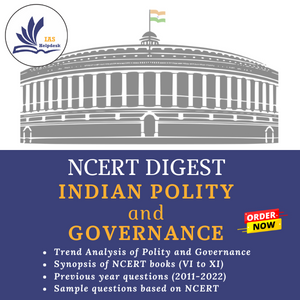Gender Inclusion Fund for Education
Description
Gender
Inclusion Fund (GIF)
Introduction
The
National Education Policy (NEP), 2020 focuses on ‘Equitable and
Inclusive Education’ which reverberates the idea that no child should be left
behind in terms of educational opportunity because of their background and
socio-cultural identities.
In
addition, NEP prescribes to approach gender as a cross-cutting priority to
achieve gender equality in education with the partnership of states and local
community organizations.
About
National
Education Policy, 2020 provides for setting up a Gender Inclusion Fund (GIF)
especially for girls and transgender students to build the nation’s capacity to
provide equitable quality education for all girls as well as transgender
students.
About
Gender Inclusion Fund (GIF)
- The fund will be utilised to ensure that all
kids receive a high-quality education.
- It will also be used to guarantee that
amenities such as secure and sanitary vending machines are
included on GIF’s infrastructure checklist.
- The NEP focuses on ‘Equitable and Inclusive
Education’ which reverberates the idea that no child should be
left behind in terms of educational opportunity because of their
background and socio-cultural identities.
- It has taken into account the concerns of the
Socio-Economically Disadvantaged Groups (SEDGs) which includes
female and transgender individuals.
- NEP prescribes to approach gender as a
cross-cutting priority to achieve gender equality in education with the
partnership of states and local community organizations.
- The objectives of NEP for equitable and quality
education for girl children are being met through specific provisions
under Samagra Shiksha 2.0 by allocating dedicated resources for Socio-Economically
Disadvantaged Groups (SEDGs).
- Under Samagra Shiksha, various
interventions have been targeted for providing quality education to girls,
which include:
- Opening of schools in the
neighbourhood to make access easier for girls,
- Free uniform and text-books
to girls up to class VIII,
- Additional teachers and
residential quarters for teachers in remote/hilly areas,
- Appointment of additional
teachers including women teachers,
- Stipend to CWSN girls from
class I to class XII, separate toilets for girls,
- Teachers' sensitization
programmes to promote girls participation,
- Gender-sensitive
teaching-learning materials including text books etc.
- To reduce gender gaps at all levels of school
education, Kasturba Gandhi Balika Vidyalayas (KGBVs), which
are residential schools from class VI to XII for girls belonging to
disadvantaged groups such as SC, ST, OBC, Minority and Below Poverty Line
(BPL), are sanctioned in Educationally Backward Blocks.
Kasturba
Gandhi Balika Vidyalayas (KGBVs)
· In addition, to reduce gender gaps
at all levels of school education, Kasturba Gandhi Balika Vidyalayas (KGBVs),
which are residential schools from class VI to XII for girls belonging to
disadvantaged groups such as SC, ST, OBC, Minority and Below Poverty Line
(BPL), are sanctioned in Educationally Backward Blocks.
· A total of 5639 KGBVs have been
sanctioned in the country with the enrolment of 6.88 lakh girls.
· The task of up-gradation of the
KGBVs was started in the year 2018-19 and till the year 2022-23, a total of 357
KGBVs have been approved for up-gradation to Type-II (class 6-10) and 2010
KGBVs have been approved for up-gradation to Type-III (class 6-12).

